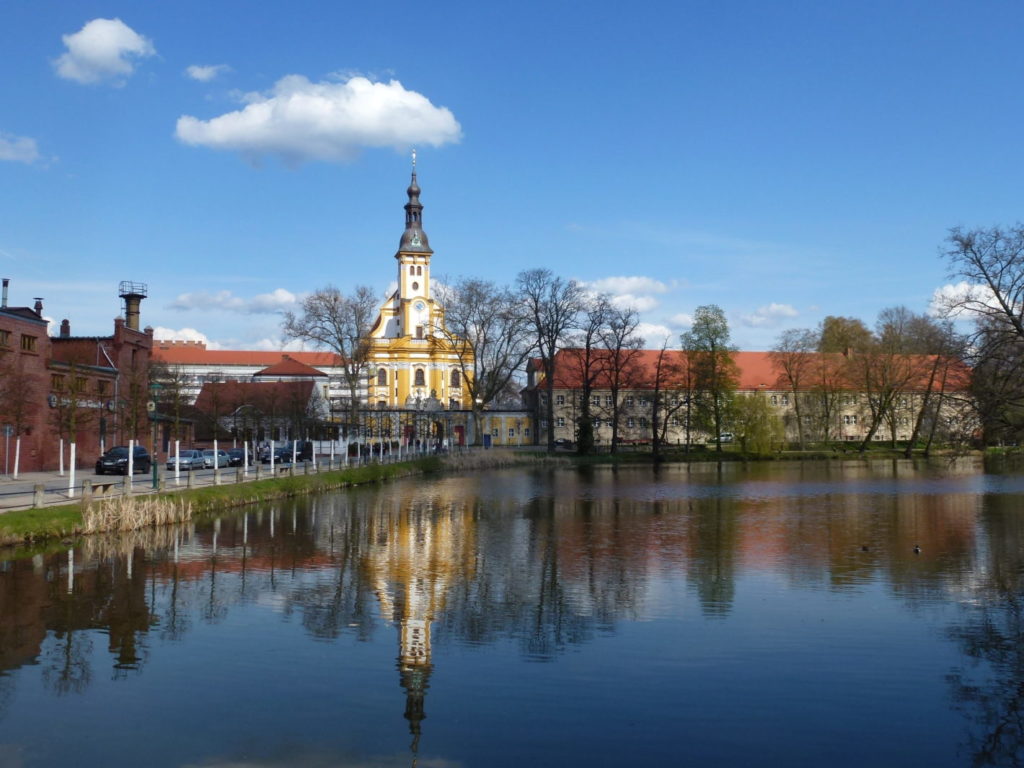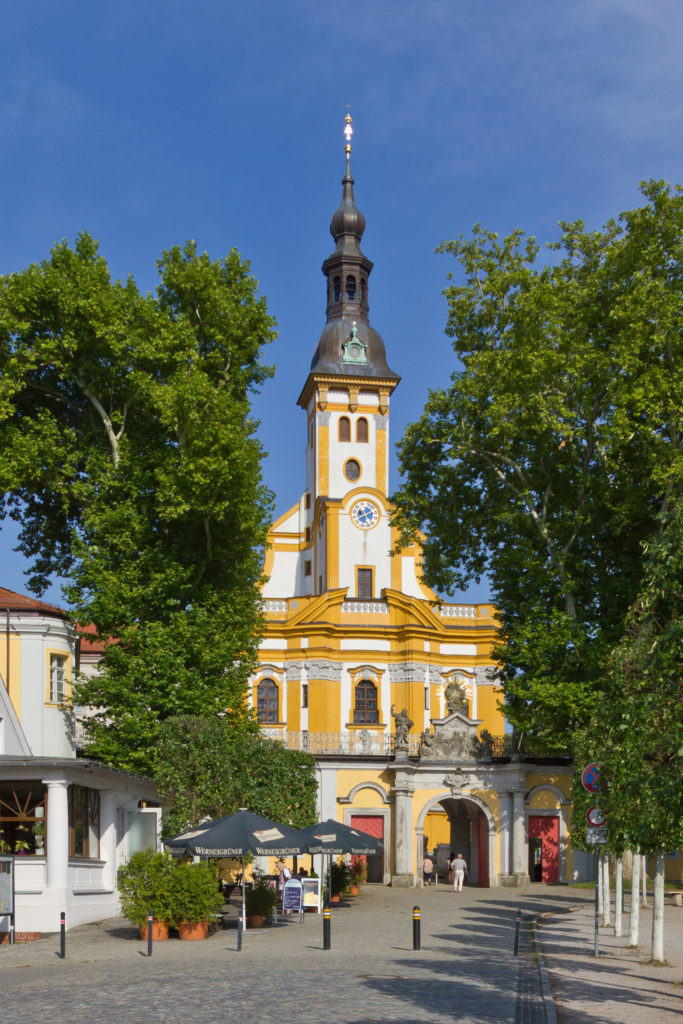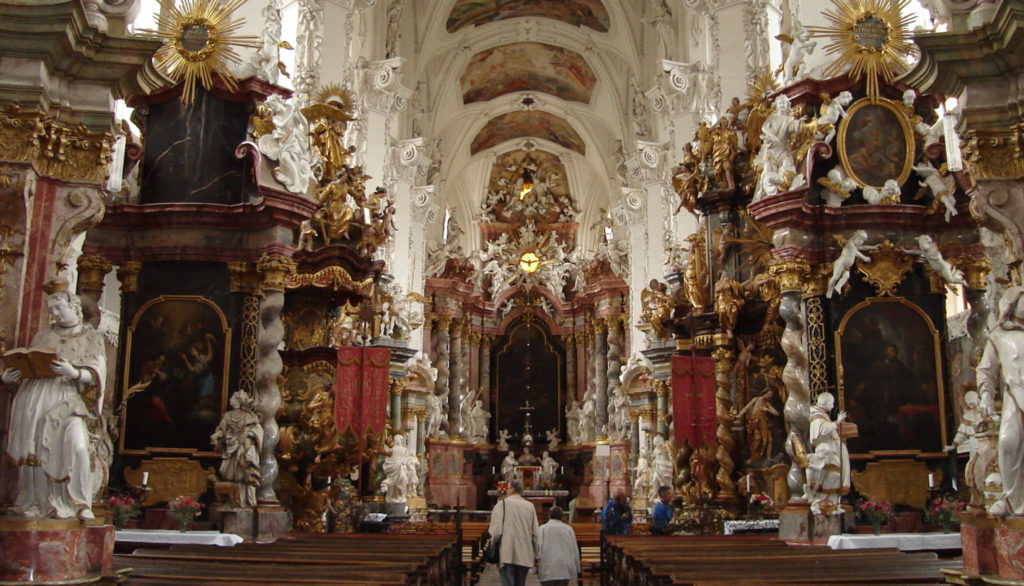The establishment of Neuzelle Priory, whose name is derived from the Latin term "Nova cella", in September 2018 as a monastery dependent on the Cistercian Abbey of Heiligenkreuz (Holy Cross) in Austria, can well be described as a historic event: it marks the return of Cistercian monks to this place near the German-Polish border after more than 200 years, since they had to leave it in 1817. The canonical erection coincided with the 750th anniversary of the first foundation of Neuzelle on October 12, 1268.
At the Congress of Vienna in 1815 - which reorganized Europe after the Napoleonic Wars - it was decided that part of the territory of Lausitz (specifically Niederlausitz, Lower Lausitz), where Neuzelle is located and until then belonging to Saxony, would become part of Prussia. The Prussian King Friedrich Wilhelm III secularized (in Spain, in this context we speak of "disentailment") this monastery in 1817: the Catholic parish church was transformed into an evangelical church; the Cistercian monks were expelled.

Neuzelle, precisely because it was not part of Brandenburg-Prussia until then, had survived the Protestant Reformation in these territories, but in 1817 the almost 550-year presence of the Cistercians in Brandenburg came to an end. In contrast to Neuzelle, two Cistercian monasteries for women in Lausitz have managed to remain uninterrupted since their foundation in the region of this territory, which remained part of Saxony: St. Marienthal (Latin: Abbatia Vallis) - the oldest female monastery of the order in Germany, founded in 1234 - and St. Mariastern (Latin: Abbatia Stellae), since 1248.
The beginnings of Brandenburg's own history are closely linked to the Cistercian order. After centuries of fighting between Germanic and Slavic peoples, the Brandenburg Mark was created in 1157, which - after the union with the principality of Prussia - was to become the nucleus of the Kingdom of Prussia, one of the great European powers. Only a few years later, in 1180, the first of the 16 Cistercian monasteries to be built in Brandenburg until the middle of the 13th century was founded: the monastery of Lehnin.
The Cistercian monasteries were not only centers of evangelization, of the expansion of Christianity, but also centers of culture, beginning with the original meaning of this term: Brandenburg was a very marshy region - the Slavic suffix -in in Lehnin, but also in many others such as Chorin or even in the name Berlin itself, refers precisely to marshy land - so the work done here by the Cistercian monks began with the draining and ploughing of the land, to turn it into arable land.
However, with the Protestant Reformation in Brandenburg, the Cistercians were forced to abandon these monasteries: Lehnin, southwest of Potsdam, and its branch monastery Himmelpfort in Uckermark, Chorin, Zinna, Dobrilugk... were secularized already in the middle of the 16th century. The Cistercians survived the Reformation only in Neuzelle.
Today, the municipality of Neuzelle - including the brewery that bears the name "Kloster-Bräu" (monastery brewery) - has 4,280 inhabitants; it is located eight kilometers south of Eisenhüttenstadt and not far from the mouth of the Neisse River on the Oder, which forms the German-Polish border. From the point of view of art history, the church has a special feature: after being damaged during the Thirty Years' War (1618-1648), it was restored in the Baroque style typical of southern Germany, which is rare in these latitudes.

After several vicissitudes - most recently it was part of a Foundation of the Land of Brandenburg since 1996 - Neuzelle Priory was canonically erected in September 2008. The canonical document reads, "Today, September 2, 2018, in the 750th year of the first foundation of the monastery, we found a new monastery and establish it as the monastery of Our Lady of Neuzelle dependent on the Cistercian abbey of Our Lady of Heiligenkreuz."
The abbey of Heiligenkreuz (Holy Cross) is located in Lower Austria and has existed without interruption since its foundation in 1133; Neuzelle becomes the third priory dependent on Heiligenkreuz, together with Neukloster, also in Austria, and Bochum-Stiepel, located in the Ruhr area.
In the diocese of Görlitz, in which Neuzelle is located, only four percent of the population is Catholic, so Neuzelle - which remained a center of pilgrimage during the years of the Cistercians' absence - is something of an "oasis". The new Prior of Neuzelle, Simeon Wester, comments: "We believe that in a restless time, in a restless world, people need and seek places where silence reigns. This is what we want to offer. Our experience in Heiligenkreuz and in the priory in Bochum-Stiepel, which was founded thirty years ago, shows us that it is attractive to many people. It is not we, but Christ, who draws them into the mystery. Especially those who are far away, through contact with a prayer community, find the strength to search coherently for the meaning of life. This is what we want to do here.
Wolfgang Ipolt, Bishop of the diocese, also encouraged them to do the same: "Show by your monastic life, both to Christians and to the many who do not yet know God, that the search for God is worthwhile, that it can make a person happy and fulfilled. Accompany with joy the people who come to Neuzelle in search of answers for their lives. I am sure that if you yourselves continue to search for God, it will spread and invite others. God and God's people expect no more and no less from you".





 Roads of Europe: Germany. Germanic roads
Roads of Europe: Germany. Germanic roads





